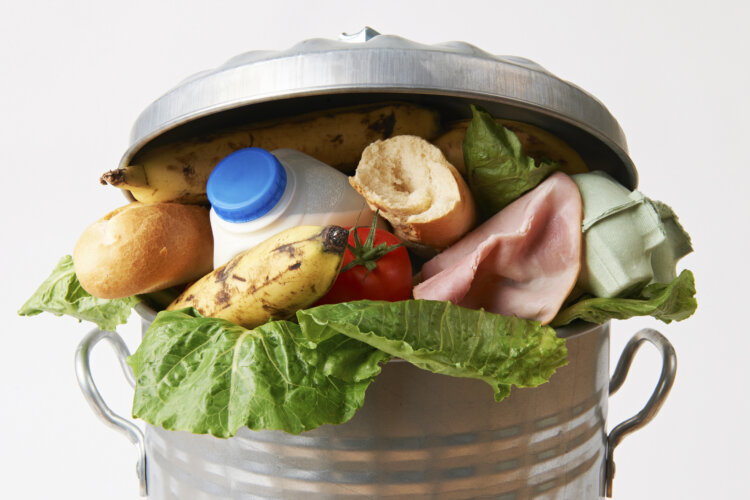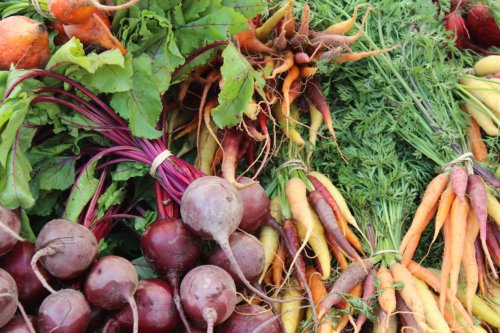
Food waste is a huge environmental problem. In the U.S., as much as 40 percent of groceries are thrown away each year. The U.S.D.A. recently found that Americans discard a pound of food per day, per person. It is crucial to the health of our planet that these wasteful habits stop.
On the commercial level, restaurants and supermarkets may reject or discard perfectly edible food for aesthetic reasons. On the consumer level, people overbuy at the supermarket and don’t end up using everything before it goes bad. There are companies strategizing how to reduce food waste on the industrial level: Most recently, Apeel created a plant-based coating that delays the rate at which produce goes bad. Midwest grocery chain Harps, which has stocked Apeel-coated avocados for four months, has reduced the amount they had to throw out by 60 percent.
But while we wait for more of the big-picture solutions that will revolutionize the food industry, here are some classic and new tips about how to reduce food waste in your home.
Shop smarter and buy less
“Snap a pic of your fridge and pantry before you head to the store,” suggests Ashlee Piper, eco-lifestyle expert and author of Give a Sh*t: Do Good. Live Better. Save the Planet. “That way, you’ll avoid buying duplicates and only get what you need.” With that photo and a list in hand, resist impulse buys. She recommends walking to and from the store for a “physical reminder” of your haul. “Walking with that pineapple and carton of soy milk will help prevent overbuying and keep you sticking to the essentials (i.e. the stuff you’ll actually eat),” she says.
According to registered dietitian LeeAnn Weintraub, you should shop and plan meals with an eye toward reusing ingredients at subsequent meals. For example, she recommends putting extra spinach in smoothies, pastas, salads and eggs.
And don’t worry about “sell by” dates: Sara Telzer, Impact and Evaluation Manager at Coastal Roots Farm near San Diego, says that sell-by dates “are manufacturers’ quality suggestions only—this food is generally good for many more weeks.”
Shop at farmers markets
Dini Klein, founder of forthcoming meal delivery service Prep + Rally, says shopping at farmers markets is a good way to save. “I waste less because I spend good money for superb produce and go out of my way to shop there,” she explains. “You wouldn’t throw an $80 steak away as quickly as you’d throw away a bag of Cheetos; if we could start thinking of everything we eat as an $80 steak we’d have much less food waste!”

Subscribe to a produce delivery service
Food delivery start-ups such as Imperfect Produce, Perfectly Imperfect and Hungry Harvest take food that supermarkets would have otherwise rejected for being misshapen or an unusual size and ship it straight to your door. Boxes are customizable, so you can choose from a list of organic and conventional fruits and vegetables. Try to “process” the food when it arrives: Wash and cut up the greens and put them in a container in the refrigerator to keep them crisper longer. Sort the potatoes and onions into a bowl; depending on the firmness of the avocados, either leave them on the counter or put them in the refrigerator.
RELATED: Read our review of Imperfect Produce here
Be a kitchen magician
Have an “eat first” shelf with perishable items, then move other items up as the shelf empties. This way you’ll always know what’s in your fridge and when it’s due to expire. And if you’re stumped on how to use those ingredients, try Supercook, a website that generates recipes based on items you have in your fridge. (For more apps and sites that help you cook with the ingredients you have, see this helpful list.)
Transform one day’s meals into the next’s: In her video series called Super Simple for Tastemade, Klein shows viewers how to turn leftover dinners into quick lunches, such as leftover rice for “the best spinach burger you’ve ever had,” roasted vegetables into tostadas, and leftover meat to make moussaka. Chef and food stylist Elizabeth Grove also uses the transformation method; she recommends using scraps for stocks, marinades, stews and chutneys. “It just takes a little creativity and inspiration to get into this mindset,” Klein says.
Prep your fresh food; freeze your surplus and leftovers
When you get home from the grocery store, make sure to unpack and prep everything right away for easy consumption. “Watermelon is a lot less likely to be tossed when it’s prepped into juicy cubes, ready to be eaten from the fridge,” Piper says. “Carrots are more likely to be gobbled up when they’re cut into kid-friendly sticks. And asparagus will stay fresher longer when stored upright in water like flowers.” If there’s still too much left over, freeze it. Also, you can freeze fresh, in-season produce for when it is out of season. The Natural Resources Defense Council offers helpful guidelines about what to freeze, when.
Pack your lunch
It’s easy to rely on a pre-made sandwich or salad bar to provide your midday meal, but according to Piper, lunchtime is the most wasteful time in the American day, “with most of our individual, daily 4.1 pounds of trash and attendant food waste occurring when we hit the local deli or grab takeout,” she says. “Packing lunch is not only shown to save you serious money and be healthier, it’s also a good way to eat what you’ve got.”

Grow your own
I bought a fresh basil plant for $3 at Trader Joe’s. I’ve had it for months whereas a clamshell of not-so-great looking basil can cost you even more than that and only last a few days. I have fresh basil at the ready and have harvested, chopped and frozen some, so if the plant ends up dying, my freezer has me covered. For all your homegrown herbs, Klein recommends blitzing them in a blender with oil and storing them in ice cube trays for seasoned oil to use later.
If you have fruit trees or vegetable plants that create more produce than you can consume, learn about organizations in your area that are working to reduce food waste, such as San Diego’s ProduceGood.
Compost food scraps
People with yards can buy affordable composting bins or get them for free depending on the city you’re in. Apartment-dwellers can often transfer kitchen-top compost scraps directly to your green bin/yard waste cans, or do worm composting. Many areas offer drop-off locations, so all you have to do is collect the scraps and hand off to the city compost program. Composting food scraps or produce that is no longer edible allows the nutrients to go back into the soil, instead of ending up in the landfill.
RELATED: Composting 101—everything you need to know
Gift leftovers
Whether you’ve cooked too much for a dinner party or for yourself, make sure to share the love with your leftovers. Not only will it help your friends and family who may be sticking to a budget, but it also helps you limit the amount you have to consume (or not) yourself. Plus, don’t forget about taking your own leftovers from restaurants.
Know what you eat
A friend of mine suggests keeping a food diary for a month to see what you really use. “Write down everything you buy, everything you eat, everything you throw away,” she tells me. “And take photos of all the food you throw away. It’s an impactful exercise and can help you plan shopping and meals better down the line.”
What are some ways you try to reduce food waste? Let us know in the comments below.


Grok Nation Comment Policy
We welcome thoughtful, grokky comments—keep your negativity and spam to yourself. Please read our Comment Policy before commenting.